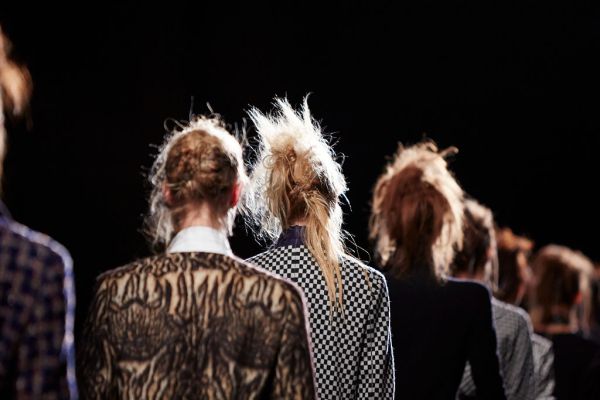When we think of Fashion Week, we think of long-lines, exclusive parties, and endless train of models.
This year you can add technology to the list.
For one, there were lots of apps. At New York Fashion Week, the Kardashian women introduced a whole line of them at the Apple Store.
Rag + Bone teamed up with Uber to get users of the app to its secret show. Misha Nonoo ditched the runway altogether, organizing an “Instashow” where followers could view the new lines using special social media accounts set up for the occasion.
Instead of the usual mix of celebrities, buyers, and editors, Givenchy allowed anyone to enter a lottery for 1,500 seats available to the public.
In New York especially, fashion seemed to be trying to ditch it’s high-end image, with outlets putting out effusive headlines like “This is the most inclusive Fashion Week ever.”
Around The World
New York wasn’t the only city whose designers seemed to be angling for a more egalitarian vibe. London Fashion Week moved their runway shows to a car-park in Soho, a move intended to bring the spectacle “closer” to retail in spirit.
Fashion luminaries once again broke out the “i-word,” with Belinda Earl, style director at Marks and Spencer’s gushing “That’s what’s great about the Soho location, it feels much more inclusive.” Even the French said Fashion Week felt different this year, with many proclaiming that fashion had finally been “democratized” and some even comparing to a “spectator sport.” Not very Vogue.
Taken together I started to realize that a lot had changed since I moved into the industry more than a decade ago. For a second it seemed like tech had started to democratize fashion the same way it democratized other industries such as entertainment.
For the first time, Fashion Weeks worldwide seemed eager to play the crowd. You don’t have to be part of the elite to attend anymore, you just needed a smartphone.
More Spectacle On The Runway
Perhaps the most profound effect of technology on the fashion industry has been the increasing importance of spectacle. When I was a buyer, a lot of business happened immediately after the show. Merchants were eager to buy as soon as possible, and you’d often place orders directly after the show.
Nowadays the opposite is true, as the tech behind fast-fashion and other technology means that trends change much faster than they used to. In that environment, it makes more sense to wait as long as you can before placing orders as you want to so you can account for trends and weather patterns.
As a result we’re seeing shows that are more showy than they are practical. For designers, fashion week is no longer about deals. It’s about making an impression.
Designers On Social
Spectacle, as well as the desire to tap coveted and trendy younger demographics, is the main reason why technology is being leveraged by an industry that once didn’t value it.
Fashion wasn’t changed much by Facebook or Twitter – neither were very visual mediums in the beginning. Instagram undoubtedly changed things for good by empowering a very young generation, fluent in social media, to collect a lot of influence very fast.
It’s also made it harder to stand out, prompting a need to reach out to consumers more directly. Popular Instagram accounts are going to see more likes, comments, and follows coming directly from the brands themselves. This past Fashion Week, DKNY even did an Instagram Direct campaign to send people personalized content that gave a behind the scenes look into the work of the creative directors.
While it’s certainly true that elements of this year’s fashion week had a more accessible, egalitarian vibe — Peter Copping from Oscar de la Renta turned heads for crediting his entire design studio in the show notes — it would still be a mistake to call this year’s fashion week “inclusive.” Fashion’s embrace of technology is just as much about the media landscape and money as it is about democratization.
Technology may now enable us to have whatever we want shipped to our door. But don’t mistake that for a fashion industry that’s been democratized by the Internet. Fashion is about dreaming, and dreams are supposed to be a little out of reach.
